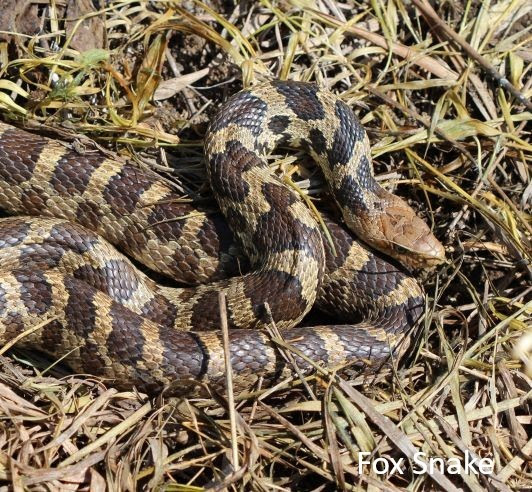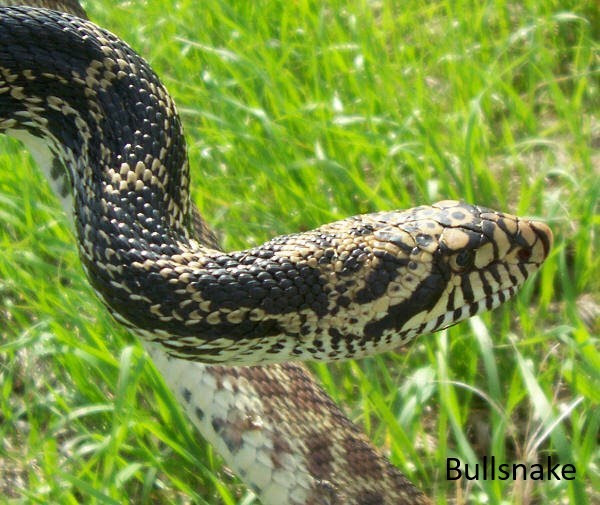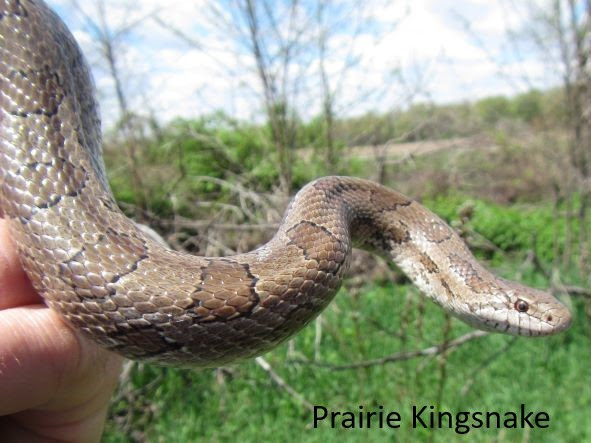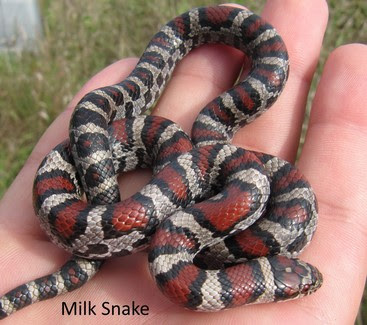
Rattlesnakes can be scary. They have fangs and venom and can potentially kill or maim you if startled or threatened. Rattlesnakes are very uncommon in Iowa with the Timber Rattlesnake being the most widespread species. Fortunately, Timber Rattlesnakes are a very calm and docile species. Unfortunately, the majority of people probably misidentify many common snakes as venomous rattlesnakes when confronted with live animals or a photo. This can create an atmosphere of fear instead of enjoyment in the outdoors. In this article, I hope to demonstrate that although there are some snake species that might look similar a rattlesnake, there are some easy ways to tell them apart.
Fox Snake
Some of the common lookalike species in Iowa are Fox Snake, Bullsnake, Common Water Snake, Prairie Kingsnake, and Milk Snake. The Fox Snake is the most commonly misidentified snake in Iowa. They are found nearly statewide and often vibrate their tails mimicking a rattlesnake rattle. Many snake species will vibrate their tails when agitated and warm. This defensive posture of coiling and tail vibrating is very good at making potential predators, including humans, think twice! Fox Snakes and Prairie Kingsnakes are both brown spotted snakes with a fairly narrow head and neck. Timber Rattlesnakes have a very constricted neck and wide head plus they have dark bands instead of spots on their bodies.

Bullsnakes have a narrow head with no neck constriction plus they have a dark band through the eye. They also have dark spots along their bodies, not bands. Common Water Snakes are a little more similar to rattlesnakes as they have bands, highly variable coloration, neck constriction, and diamond shaped heads. Fortunately they are almost always encountered around water, unlike rattlesnakes. We don’t have venomous Cottonmouths or Water Moccasins in Iowa so all water snakes in Iowa are harmless. Although Milk Snakes will vibrate their tails, their reddish spots and narrow head and neck let you know they aren’t a rattlesnake. If you look closely, you'll find that rattlesnakes have a slit or cat-eye pupil whereas our harmless snakes have a round pupil. Finally, let’s not forget that all of these common harmless snakes are lacking a rattle! Rattlesnake rattles are very conspicuous and are seldom missing.
If you are still a bit uneasy, rest assured that most snakes encountered in Iowa are harmless, but should be left alone especially if you are unsure of their identification. If you ever see an actual rattlesnake in the wild, please keep your distance and enjoy the encounter. Rattlesnakes are a really amazing member of Iowa's natural world!
Bullsnakes are no longer a common species in Iowa. Fox Snakes are the most common large snake in the state.
Common or Northern Water Snakes are often mistaken for venomous snake species. Although they will bite if provoked, they are harmless.

Prairie Kingsnake
|

Milk Snakes can be bright red and look like a candy cane! They eat small mammals like mice and voles.
|

Notice the large head, thin neck, and conspicuous rattle on Timber Rattlesnakes.
|
For more information about snakes in Iowa, please check out IowaHerps.com and their Snakes of Iowa.